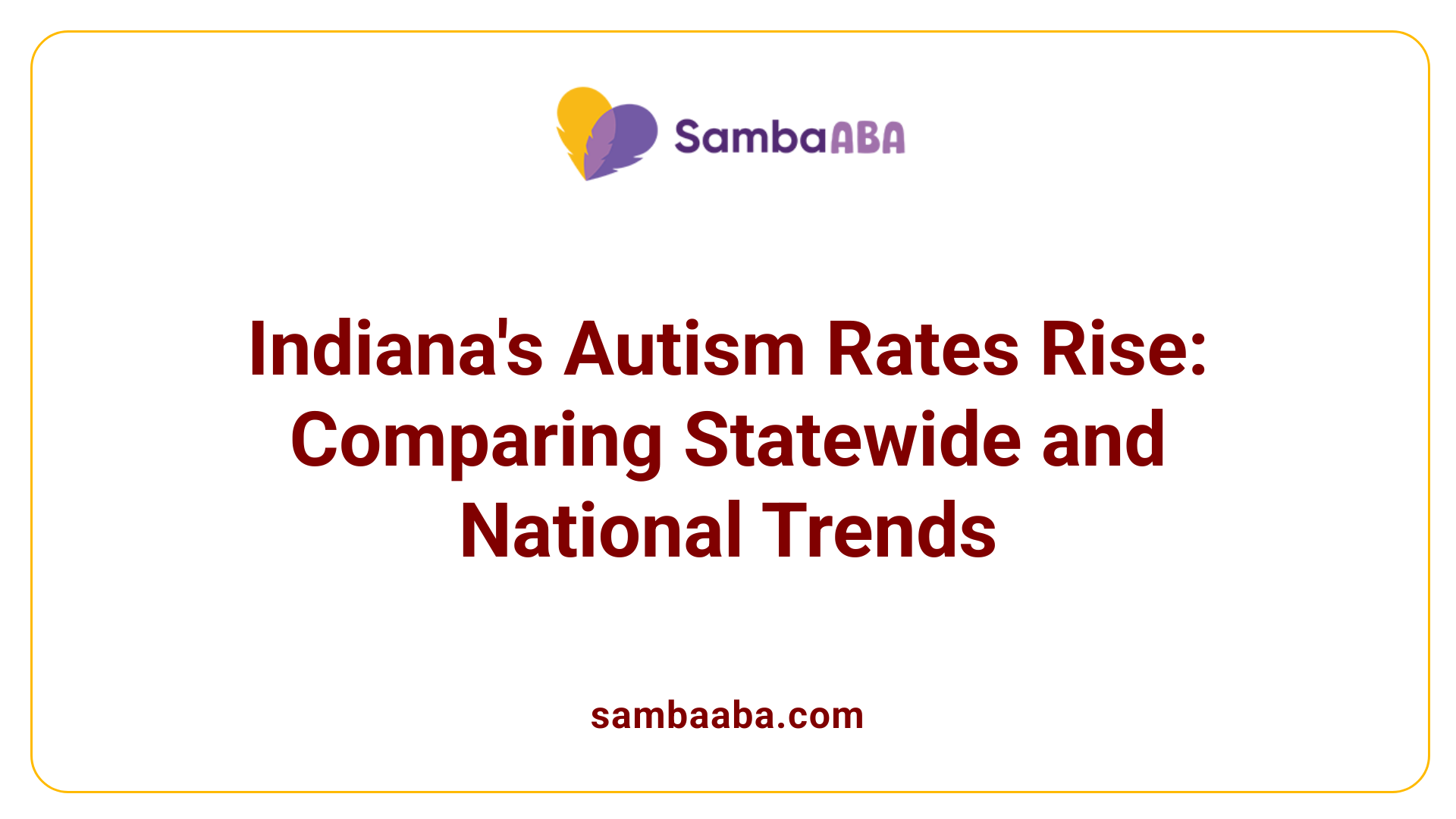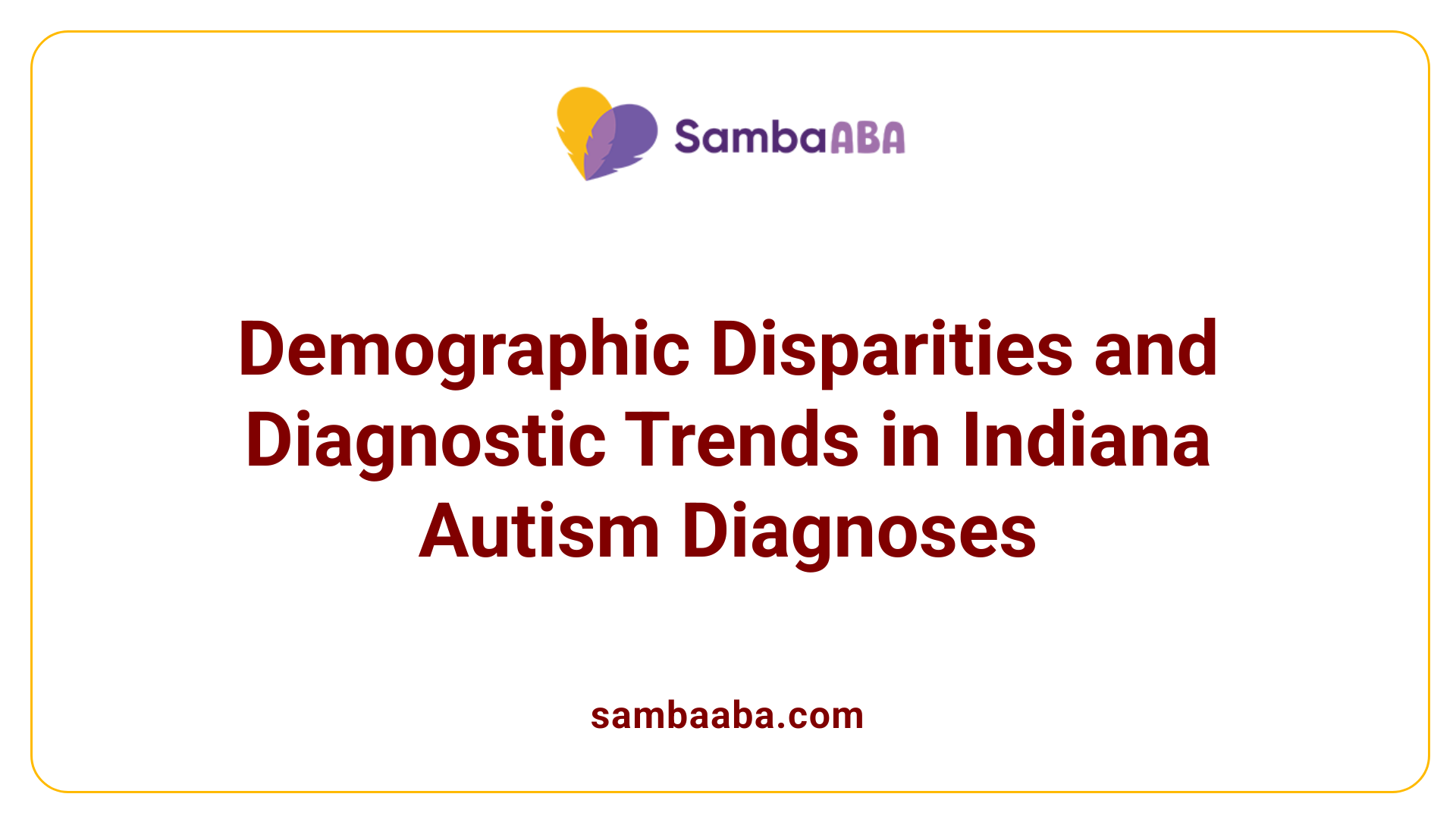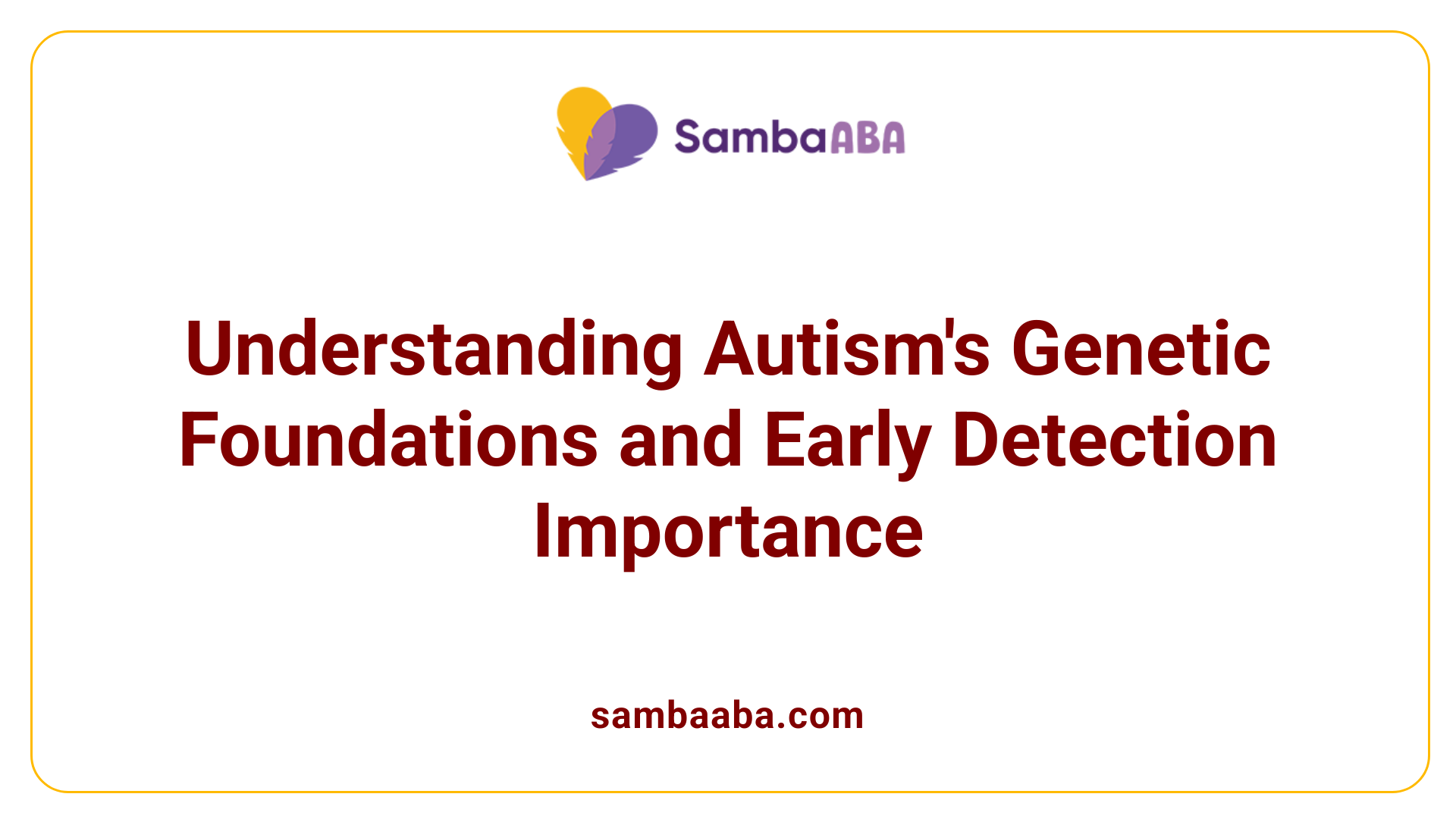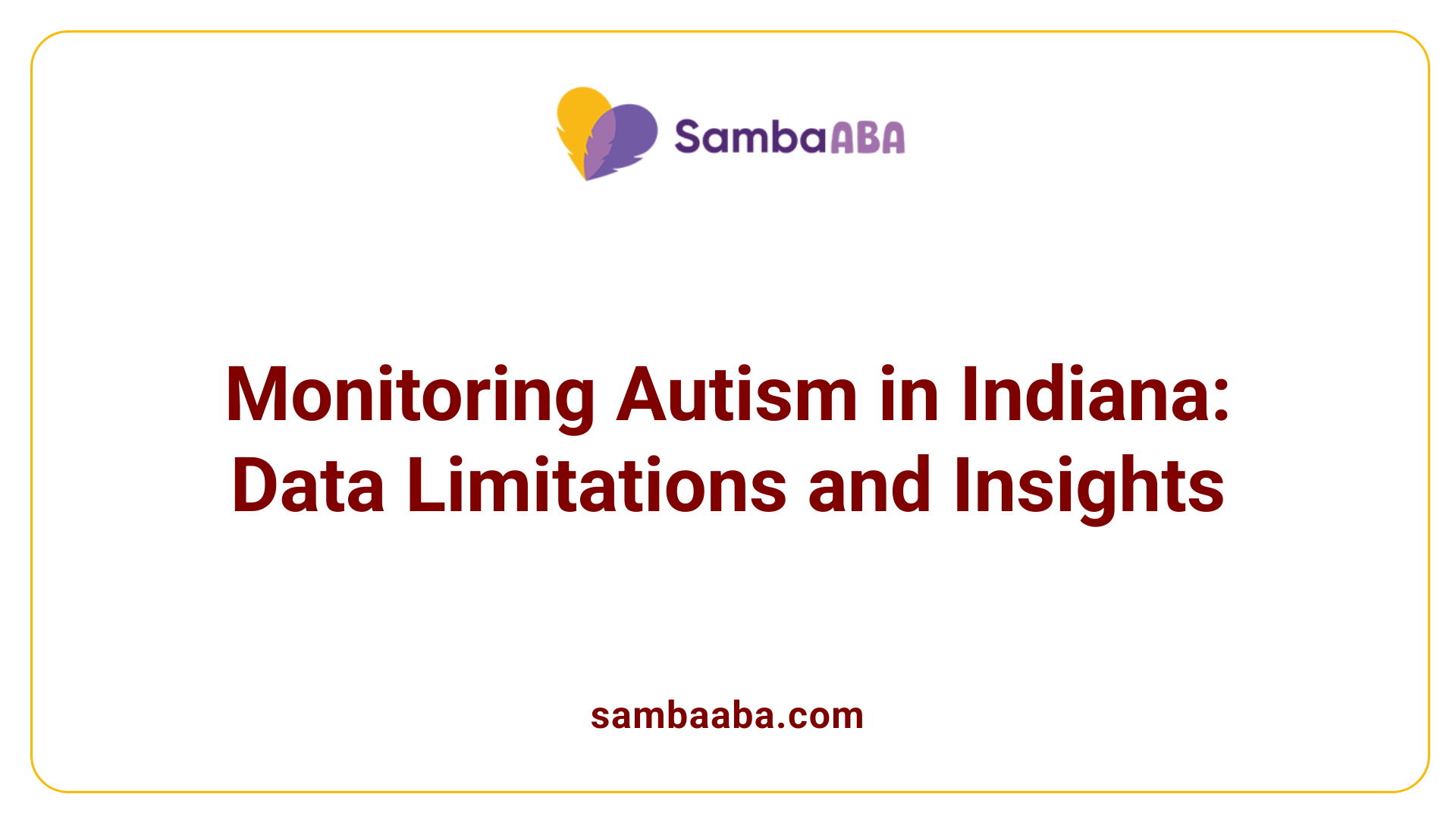Autism Prevalence In Indiana
Rising Trends and Regional Comparisons of Autism in Indiana
Understanding Autism in the Hoosier State
Autism Spectrum Disorder (ASD) prevalence is increasing both nationally and within Indiana. As awareness and diagnostic practices improve, early identification and support services are becoming more accessible. This article explores the latest data, regional comparisons, demographic trends, and the factors influencing autism prevalence in Indiana.
Current Autism Prevalence Rates in Indiana
What is the current autism prevalence rate in Indiana?
As of the 2022-2023 school year, Indiana's prevalence of autism among children is approximately 1 in 63. This equates to about 1.58% of the school-aged population and signals a continuous increase in autism diagnoses over recent years. The data, derived from the child count maintained by the Indiana Department of Education, indicates a rising trend in identifying children with ASD.
Specifically, for 8-year-olds, the autism prevalence rate is roughly 1 in 55 children, or about 1.8%. For younger children around age 4, the prevalence is approximately 1 in 78, which translates to about 1.3%. The average age at diagnosis in Indiana is 5.5 years, with most children being identified at age 3.
These figures show that with greater awareness, earlier screening methods, and improved diagnostic practices, more children are being diagnosed at younger ages. Notably, the autism identification rate has increased from 1 in 66 last year to 1 in 63 this year, reflecting a dynamic and evolving understanding of ASD within the state.
Over the years, Indiana has seen its autism prevalence slightly exceed the national average of about 1 in 44 children, which in 2018 was estimated at 1 in 44 nationwide. Urban and demographic factors also play roles in these statistics, with challenges in diagnosing girls and children from Black and brown communities influencing the numbers.
Overall, Indiana's rising autism prevalence underscores the importance of early intervention. The cost of lifelong care can be reduced significantly—by about two-thirds—if ASD is diagnosed promptly and appropriate services are initiated early.
For more detailed data, recent updates can be found through the Indiana ASD Needs Assessment, which emphasizes ongoing monitoring and improved diagnostic practices to serve the state's children better.
Regional and State-wide Comparisons

How does Indiana compare to other states in terms of autism prevalence?
Indiana exhibits a relatively high rate of autism diagnoses compared to many other states. The latest data shows that about 3.5% of children in Indiana have been diagnosed with an Autism Spectrum Disorder (ASD). This percentage surpasses the national average of 3.0%, as reported by the CDC, and ranks Indiana among the states with the highest prevalence in the Midwest.
Specifically, the estimated autism rate in Indiana is approximately 1 in 54 children, which is higher than neighboring states such as Michigan (3.2%), Illinois (3.1%), Kentucky (2.6%), and Ohio (2.7%). This higher prevalence may be partly due to increased awareness, improved diagnosis, and effective data collection methods.
The state has developed a robust support and intervention framework to meet the needs of its autism community. Indiana has numerous programs and organizations such as the Indiana Resource Center for Autism and the Autism Society of Indiana, which coordinate educational resources, community events, and support groups.
Moreover, Indiana advocates for Medicaid coverage for autism-related services, ensuring that families have access to essential therapies and early intervention programs. These efforts aim to facilitate better outcomes and improve quality of life for individuals on the spectrum.
Regional differences within Indiana are less documented due to the reliance on child count data from public schools, which may not capture all cases, especially among homeschooled children or those in private schools. Nonetheless, the statewide infrastructure positions Indiana as a leader in providing comprehensive ASD support compared to other Midwest states.
| State | Autism Prevalence | Approximate Percentage | Support Infrastructure | Notable Features |
|---|---|---|---|---|
| Indiana | 1 in 54 | 3.5% | Extensive programs, community support, Medicaid coverage | Highest among Midwestern states |
| Michigan | 3.2% | 1 in 31 | Local organizations, early intervention programs | Moderate prevalence |
| Illinois | 3.1% | 1 in 32 | Statewide support networks | Slightly below Indiana’s rate |
| Kentucky | 2.6% | 1 in 38 | State autism initiatives | Lower prevalence than Indiana |
| Ohio | 2.7% | 1 in 37 | Educational resources, support centers | Slightly below Indiana’s rate |
| US Average | 3.0% | 1 in 33 | Federal programs, national awareness campaigns | Overall national trend |
Demographic Trends and Diagnostic Patterns

What are the demographic trends in autism diagnoses in Indiana?
Autism diagnosis trends in Indiana reflect the broader national increase in autism spectrum disorder (ASD) prevalence. Recent data from the Indiana ASD Needs Assessment shows that approximately 3.5% of children in the state have been diagnosed with autism, making Indiana the state with the highest percentage of ever-diagnosed children in the Midwest.
The average age for an autism diagnosis in Indiana is around 5.5 years, with many children identified as early as age 3. This early identification can be crucial, as research indicates that early intervention can significantly reduce lifelong care costs—by as much as two-thirds.
Over recent years, the identification rate has experienced some fluctuation. The school-based diagnosis rate slightly decreased from 1 in 62 last year to 1 in 66 this year. This change may partly be attributed to disruptions caused by the COVID-19 pandemic, which impacted healthcare and educational services.
Despite these fluctuations, the overall trend points to an increase in autism diagnoses across the state. Factors contributing to this rise include increased awareness, improvements in diagnostic criteria, and broader screening efforts, especially in underserved communities.
Are there any disparities in autism diagnoses based on gender and races?
Yes. Autism is notably more prevalent among boys, with research showing that boys are approximately 3.4 times more likely to be diagnosed than girls. This gender disparity is consistent both nationally and in Indiana.
Regarding racial and ethnic backgrounds, challenges in diagnosing girls and children from Black and brown communities are recognized. These disparities can stem from cultural differences, limited access to diagnostic services, or biases within healthcare and educational systems. Efforts are ongoing to address these gaps to ensure equitable diagnosis and intervention.
How does access to diagnostic services affect prevalence figures?
Access to diagnostic services plays a vital role in understanding the true prevalence of autism. In Indiana, official data primarily comes from public school records, which include children with special education plans. However, there is no comprehensive statewide database tracking all individuals on the autism spectrum, including those diagnosed but not enrolled in public schools.
Pandemic-related disruptions and disparities in healthcare access can lead to underdiagnosis, especially among minority and rural populations. Expanding diagnostic resources and outreach efforts could help capture a more accurate picture of autism prevalence in Indiana.
| Aspect | Statistic | Additional Notes |
|---|---|---|
| Overall prevalence in Indiana | 3.5% | Highest among Midwest states |
| Diagnosis rate (2022-2023 school year) | 1 in 63 | Slight decrease from previous year |
| Average diagnosis age | 5.5 years | Early diagnosis is crucial for intervention |
| Gender disparity | Boys 3.4x more likely | Consistent nationally |
| Racial disparities | Noted in girls and minority groups | Ongoing efforts needed |
Understanding these patterns helps policymakers and service providers work toward more equitable and early diagnosis, improving outcomes for all children with autism.
Factors Influencing Autism Heritability and Diagnosis

What factors contribute to the heritability of autism?
Autism heritability is influenced by a mix of common genetic variations and rare genetic mutations. Research suggests that around 50% of genetic risk stems from common variants, which are widespread across many individuals. Meanwhile, about 15-20% is due to spontaneous mutations or inherited gene patterns that run in families.
Whole genome sequencing has played a vital role in uncovering specific genes linked to autism, such as PLEKHA8 and SNCAIP. Inherited mutations in these genes, sometimes coming from unaffected parents, can increase the risk of developing autism. Additionally, children exhibiting language delays often carry high polygenic scores—these are collections of many small genetic effects associated with autism.
Overall, multiple genetic factors contribute to autism's heritability, including inherited mutations, spontaneous genetic changes, and polygenic risk scores. The interaction of these elements helps shape the likelihood that a person will develop autism spectrum disorder (ASD).
How does early diagnosis impact lifelong care costs?
Detecting autism early can significantly reduce the long-term costs associated with lifelong care—by roughly two-thirds. Although most children are diagnosed after age 4, autism can be reliably identified as early as age 2.
Early diagnosis enables timely intervention, such as therapy and support services. This early support can dramatically improve developmental outcomes, helping children reach their full potential. Moreover, it alleviates the emotional and financial burden on families and health systems over time.
By identifying autism sooner, families can access specific resources and therapies that promote better skills development, leading to more independent and healthier futures for children with autism.
Tracking and Reporting Autism in Indiana

Is there a comprehensive database for autism prevalence in Indiana?
Currently, there is no statewide database that accurately tracks the total number of individuals on the autism spectrum in Indiana. The most reliable data available come from annual child count reports collected by the Indiana Department of Education and the Department of Special Education.
These reports focus on children who have an Individualized Education Program (IEP) or a special education service plan within public and non-public schools. However, they do not include data on home-schooled children or students in non-public schools who do not receive special education services.
Limitations of this data include challenges in capturing all cases of autism, especially among certain populations such as girls and children from Black and brown communities, who are often underdiagnosed or diagnosed later. Additionally, the use of categories like Developmental Delay for autism-related services impacts prevalence figures.
Despite these challenges, the child count data provides important insights into autism trends within Indiana. For example, the reported identification rate for children with ASD has increased from 1 in 66 last year to 1 in 63 this year, reflecting rising awareness and diagnosis.
While a definitive statewide autism prevalence figure remains elusive, ongoing collection of child-specific data helps monitor the scope and growth of autism in Indiana, guiding state policies and resource allocation.
Understanding Autism Data in Indiana
| Data Source | Population Covered | Limitations | Notes |
|---|---|---|---|
| Child Count Data | Children with IEP or special services in schools | Excludes homeschooled children and some private school children | Collected annually, informing trends |
| National Surveys (e.g., NSCH) | Broader national estimates | Not specific to Indiana | Indicates regional comparison |
| State Reports (e.g., ASD Needs Assessment) | School-based identification rates | Limited to public school data | Reflects diagnosis trends among children |
Search for More Autism Prevalence Information
For more detailed and current autism prevalence data specific to Indiana, you can search using the phrase "autism prevalence data Indiana." This helps locate reports, research, and updates directly relevant to the state's autism landscape.
Looking Ahead: Improving Autism Support in Indiana
As autism prevalence continues to rise in Indiana, efforts to enhance early diagnosis, tailor support services, and expand community resources remain critical. The state's ongoing data collection and research advancements will help shape effective policies and programs. By understanding demographic patterns and regional differences, Indiana can better address the needs of its autism community and foster a more inclusive environment for all individuals affected by autism spectrum disorder.
References
- Facts & Statistics - Autism Society of Indiana
- Prevalence of Autism Spectrum Disorders in Indiana: Articles
- [PDF] Indiana Autism Spectrum Disorder Needs Assessment
- Prevalence of Autism Spectrum Disorders in Indiana
- [PDF] Children & Youth with Special Healthcare Needs (CYSHCN) - IN.gov
- New genetic clues uncovered in largest study of families with ...
- Autism diagnosis on the rise, according to trends study
- Health Equity through Autism Research Translation Lab
- [PDF] Indiana Autism Spectrum Disorder Needs Assessment
